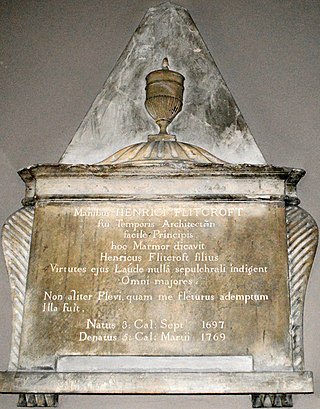Events
- January 27 – The Pantheon, London, designed by James Wyatt, opens to the public (demolished 1937). [1]

| |||
|---|---|---|---|
| Buildings and structures +... |
The year 1772 in architecture involved some significant architectural events and new buildings.



The Pantheon is a former Roman temple and, since AD 609, a Catholic church in Rome, Italy. It was built on the site of an earlier temple commissioned by Marcus Vipsanius Agrippa during the reign of Augustus ; then, after the original burnt down, the present building was ordered by the emperor Hadrian and probably dedicated c. AD 126. Its date of construction is uncertain, because Hadrian chose not to inscribe the new temple but rather to retain the inscription of Agrippa's older temple.
The year 1933 in architecture involved some significant architectural events and new buildings.
The year 1911 in architecture involved some significant architectural events and new buildings.
The year 1863 in architecture involved some significant architectural events and new buildings.
The year 1923 in architecture involved some significant architectural events and new buildings.
The year 1886 in architecture involved some significant architectural events and new buildings.
The year 1874 in architecture involved some significant architectural events and new buildings.
The year 1859 in architecture involved some significant architectural events and new buildings.
The year 1883 in architecture involved some significant events.
The year 1884 in architecture involved some significant architectural events and new buildings.
The year 1812 in architecture involved some significant events.
The year 1849 in architecture involved some significant events.
The year 1864 in architecture involved some significant architectural events and new buildings.

Henry Flitcroft was a major English architect in the second generation of Palladianism. He came from a simple background: his father was a labourer in the gardens at Hampton Court and he began as a joiner by trade. Working as a carpenter at Burlington House, he fell from a scaffold and broke his leg. While he was recuperating, the young Lord Burlington noticed his talent with the pencil, and by 1720 Flitcroft was Burlington's draughtsman and general architectural assistant, surveying at Westminster School for Burlington's dormitory, and superintending at the site at Tottenham House. Working life in the inner circle that was driving the new Palladian architecture was an education for Flitcroft.
The year 1872 in architecture involved some significant architectural events and new buildings.
The year 1904 in architecture involved some significant architectural events and new buildings.
The year 1827 in architecture involved some significant architectural events and new buildings.
The year 1711 in architecture involved some significant events.
The year 1829 in architecture involved some significant events.